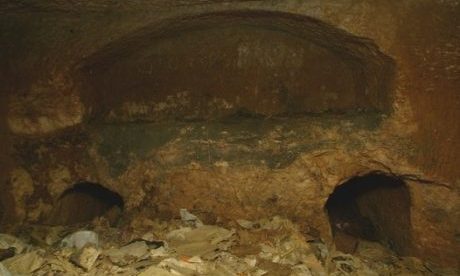Last week, for the first time in its history of nearly 2,000 years, the tomb (sepulchre) of Jesus was examined by archaeologists and conservationists. Never before has it been subject to scientific scrutiny.
These men of science, accompanied by a group of selected priests and monks, were surprised by what they saw. Despite centuries of damp, wars and more than a dozen earthquakes, everything in the rock-cut cave chamber is still intact.
It has been central to the Church of the Holy Sepulchre, or, as it is called by Orthodox Christians, the Church of the Anastasis (the Resurrection), since it was commissioned 1,670 years ago by Emperor Constantine a year after the Council of Nicaea.
Not only is the rough burial shelf hewn from rock in one piece, but an additional feature was noted which verifies that the holy tomb conforms to standard burial chambers of the era.
Remnants of the original 6ft-high walls which had been cut into the ancient limestone quarry still stand on the bedrock. There was also a broken slab of marble protecting the burial slab on which a small cross is carved.
Equally important is how the features seen and photographed by the scientists tie in with the descriptions of Jesus’s burial and tomb in the New Testament. Fr Athanasius Macora, who looks after the Catholic interest in the church, explained: “Nothing contradicted what is described in the Gospels.”
Fr David Neuhaus, patriarchal vicar for Hebrew-speaking Catholics, described the emotion of witnessing the moment of the uncovering of the tomb by the National Technical University of Athens, using physical strength and metal ropes: “It was very moving for all of us; a real moment of reason strengthening faith. Our eyes beheld that which is written in the New Testament.” Continue reading
Sources
- Catholic Herald article by Jill, Duchess of Hamilton, who is an author, conservationist, journalist and historian
- Image: The Jerusalem Post
